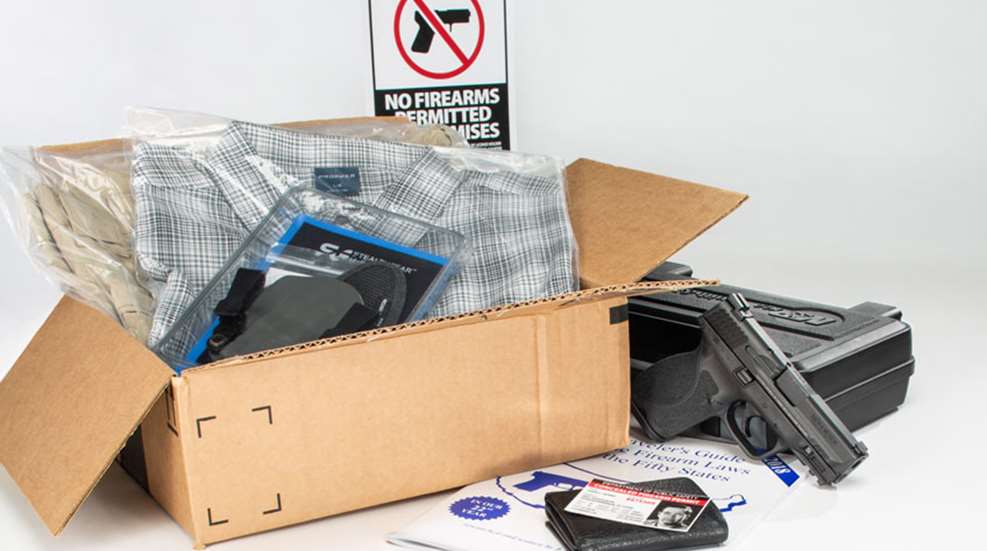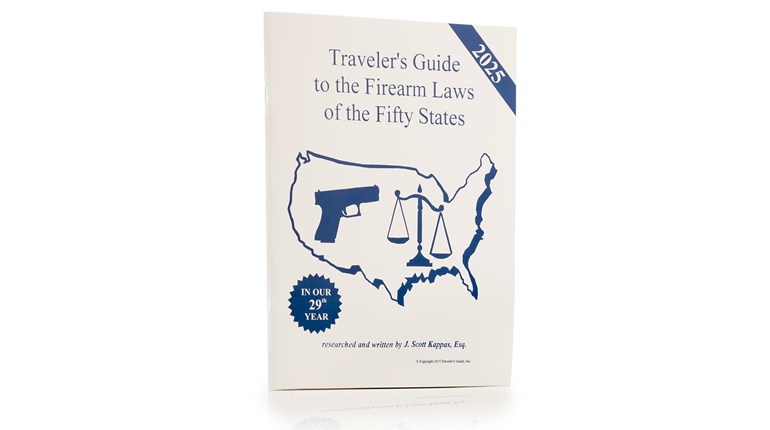
With the growth of lawful concealed carry in America, it would seem more citizens are carrying daily. Unfortunately, a large majority choose not to carry, or carry infrequently. While there are many reasons, the most-common one seems to be comfort level. I have the privilege of conducting the state-required training, which puts me in close contact with the everyday citizen. It also gives me the opportunity to talk to them both after the class as well as when I see them visiting our range. Comfort level is centered around three subjects: Knowing the law, knowing what they are doing and the idea of having to change out their wardrobe.
Personal safety is a personal responsibility and so is knowing the law. Take the time to learn and understand the law in your home state. While most issuing states require attending a course as it relates to carrying concealed, the law can still be intimidating. My recommendation is to break it down into two categories. The first category is understanding the law as it relates to where and how you may carry concealed. Where you may carry will deal with location.
Start by questioning the locations you frequent the most. Places such as your work, the grocery stores, convenience stores and sporting venues. You will need to understand the locations that prohibit firearms on premise by law as well as those that choose to prohibit for personal reasons or beliefs. Some prohibited locations are obvious, such the secured area of airports, federal buildings and schools. For those prohibited locations, they must have a way of communicating their choice to customers. Usually this is in the form of signs. Effective notice could be given verbally, but most will be through signs. Most signs are required to be posted in clear language, easy to see, convenient to the entrances and exists. But signs vary, so make sure you understand what effective notice means as it relates to carrying concealed and look for them.

If you are in doubt—or you recognize the premises prohibits guns—then secure your gun in your vehicle. Great care must be taken when doing so to avoid both negligent discharges as well as theft. You, of course, could choose to go elsewhere, but if you choose to go inside you are required to follow the law and do so unarmed. Hiding your gun in your vehicle is not suitable nor will it ensure it is not stolen. Remember, carrying concealed is a responsibility, as is ensuring your gun does not fall into the wrong (unauthorized) hands.
Some states will also regulate how you carry concealed. This mainly concerns whether the handgun must be in a holster and what type of holster. However, your jurisdiction can also go into detail describing where it may be carried, such as on the hip as well as it not being in public view. Do not shove a gun in your waistband or pocket without a holster. It is risky and totally avoidable. The trigger must be protected from foreign objects that could create a negligent discharge. These objects could be your trigger finger, your clothing and other items. These regulations exist to minimize the potential for negligence by providing guidance on how the gun can be carried.
The second category would be knowing the law as it relates to the use of force and the use of deadly force. That’s well beyond the scope of this article, but it’s where the rubber meets the road. Do you understand the difference between these two seemingly similar subjects? If not, take some time to read up on both from experts in the field. Learn what constitutes a deadly force threat in your home state. A common mistake is expecting this subject to be black and white. In some cases it might be, but there can be a lot of gray area. Research related reading material. There are great books and resources that go into great detail on the subjects helping to give you peace of mind.

After you have hurdled the law, the next obstacle to overcome is the “how.” Some folks I have talked with did not feel comfortable, because they felt as though they didn’t know how to safely carry concealed. You might be comfortable shooting a handgun, but not so much carrying it on your person. It is normal to be a little nervous the first few times. Once you have some carrying experience your nervousness will begin to subside. The other problem for some is how to practice. While there are some great video resources, none of them will replace quality instruction from a certified instructor. They can help answer questions from how to choose a handgun as well as suggest where to carry on the body. If you were to take a step back and look at the industry from the eyes of someone new it can be overwhelming. Just remember, you will get what you pay for watching online resources.
With a little guidance, you will find a combination of handgun and holster to fit your needs. A little trick I recommend to new students is practicing in your home with an unloaded handgun or inert replica. It might sound a little silly, but in the sanctity of your home the nervousness will begin to subside. If you like the idea of practicing in your own home then start by learning how to unload and clear your handgun. Double-check to make sure it is unloaded. Practice for short intervals at first, gradually working up to a full day or weekend.
At first it may feel awkward, but with time it will become less, eventually leading to your new norm. Remember, this is new to you, so take it slow. Once you get comfortable carrying in your home, the next step is to practice your drawstroke. Again, double-check to make sure your handgun is unloaded and always keep the muzzle pointed in a safe direction. I recommend practicing from an open condition first. Don’t jump right into a concealed drawstroke. Work your way through these progressions with safety in mind.
The last obstacle we see has to do with the notion of changing the way you dress or having to buy a whole new wardrobe. Some have complained they needed specialized clothing to carry concealed. You really don’t or shouldn’t need customized clothing. A big part of this solution is in choosing a gun ideally suited for concealment. While size is important, you want to make sure you can handle the gun safely and shoot it well. I try to encourage my students to live their life, but be armed as they see fit. My recommendation, particularly in the beginning is to go with some simple concealment techniques.

There’s nothing too fancy on these concealment techniques. They are tried and true and will help you form your own style and technique. Start by choosing heavier clothing material. The human body does not have sharp corners or edges, so the goal is to soften the ones we add when we carry a gun concealed. Heavy material is less likely to stretch across these sharp corners leaving an imprint of something underneath. This imprint is sometimes referenced as “printing” and something to avoid. Darker colors are your friends. Not only does light have a harder time passing through, but they also help break up those sharp corners.
Most carry guns are dark or black, in color so a light-colored cover garment could reveal a dark object underneath. Solids are nice, but patterns do a great job of breaking up sharp corners, particularly disorganized patterns. So, that Hawaiian shirt you have been dying to wear is a great cover garment most of the time. These suggestions are a helpful starting guide until you feel more comfortable. You can experiment as you try new things, but this will get the ball rolling. The goal is helping to build confidence.
It is great to see so many people obtaining their license to carry. It is a major victory on many fronts, but it is only a single step in a long journey. Carrying with confidence does not happen overnight. It takes time and practice to get comfortable. What will help you take that first step is becoming more knowledgeable in the law. You don’t need a law degree, but you will need a deeper understanding. Everyone needs to start somewhere and following some basic safety precautions will allow you to begin carrying regularly. It is a matter of building confidence in a safe environment before braving the real world.
You don’t need specialized clothing to start carrying daily. You will more than likely have enough in your existing wardrobe to start practicing. You should feel relaxed in clothing you normally wear; which will help you stay relaxed while carrying. Every person’s journey will be different. Think about this material. If this material helped you navigate this new territory, I’m grateful and consider it a success. Remember, your personal safety is your responsibility.






































